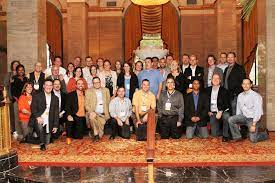Introduction to Virtual Tours in Content Marketing
In today’s content marketing world, where attention spans are dwindling and competition for engagement is fierce, content marketing has become a vital strategy for businesses to connect with their audience. However, simply producing written or visual content is no longer enough to capture the attention of consumers. Enter virtual tours – an innovative and immersive way to bring your audience closer to your brand.
Let’s explore the impact of virtual tours in the content marketing world, exploring their rise to prominence, the benefits they offer, successful case studies, creation strategies, optimization tips, measurement techniques, available tools, and future trends. By the end, you will understand the power of virtual tours in driving engagement and how they can revolutionize your content marketing efforts.

Content Marketing World
The rise of virtual tours in the content marketing industry
Over the past few years, virtual tours have gained significant popularity among content marketers. This can be attributed to several factors. Firstly, advances in technology have made it easier and more affordable to create and share virtual tours. With the rise of 360-degree cameras and virtual reality (VR) headsets, businesses of all sizes can now create engaging virtual experiences without breaking the bank.
Secondly, virtual tours offer a unique opportunity for businesses to showcase their products or services in a more engaging and interactive way. Whether it’s a real estate agent showcasing a property or a travel agency highlighting a destination, virtual tours allow potential customers to explore and experience a place or product before making a purchase decision.
Lastly, virtual tours have proven to be highly effective in capturing and retaining the attention of users. Research has shown that people spend significantly more time engaging with virtual tours compared to traditional forms of content. This increased engagement translates into higher brand awareness, increased conversions, and ultimately, a better return on investment for content marketers.
Benefits of using virtual tours in content marketing
The use of virtual tours in content marketing offers a wide range of benefits for businesses. Firstly, virtual tours provide a more immersive and interactive experience for users, which can significantly enhance their engagement with the content. By allowing users to explore a space or product in a virtual environment, businesses can create a more memorable and impactful brand experience.
Secondly, virtual tours can help businesses stand out from the competition. In today’s crowded content marketing world, it’s essential to find unique ways to grab the attention of potential customers. Virtual tours offer a fresh and innovative approach to content marketing, making it more likely for businesses to cut through the noise and leave a lasting impression on their audience.
Additionally, virtual tours can improve the overall user experience. By providing a visual and interactive representation of a space or product, businesses can help users make more informed decisions. Whether it’s choosing a hotel room or selecting a new car, virtual tours allow users to explore and evaluate their options in a way that traditional content cannot replicate.
How to create a virtual tour for your content marketing strategy
Now that we understand the benefits and impact of virtual tours in content marketing, let’s explore how businesses can create their own virtual tours. The first step is to determine the purpose and goal of the virtual tour. Whether it’s showcasing a physical space, a product, or a destination, having a clear objective in mind will help guide the creation process.
Next, businesses need to gather the necessary equipment and software to capture and create the virtual tour. This includes a 360-degree camera, a tripod, and virtual tour software. There are several options available in the market, ranging from basic tools for beginners to more advanced solutions for professionals.
Once the equipment is ready, businesses should plan and organize the virtual tour shoot. This involves mapping out the space or product that will be captured and creating a shot list to ensure all the necessary elements are covered. It’s important to pay attention to lighting, angles, and details to create a visually appealing and immersive experience.
After capturing the footage, businesses can use virtual tour software to stitch and edit the images or videos together. This process involves aligning and blending the shots to create a seamless and smooth virtual tour. Businesses can also add interactive elements such as hotspots or annotations to enhance the user experience.
Finally, businesses should choose the appropriate platform to host and share their virtual tour. There are various options available, including embedding the tour on a website, sharing it on social media, or using virtual reality (VR) platforms for a more immersive experience. The choice of platform will depend on the target audience and the specific goals of the content marketing strategy.

Content Marketing World
Tips for optimizing virtual tours for maximum engagement
While virtual tours offer a unique and engaging experience, there are several strategies businesses can employ to optimize their virtual tours for maximum engagement. Firstly, it’s important to keep the virtual tour concise and focused. Avoid overwhelming the user with too much information or unnecessary details. Instead, focus on highlighting the key features and benefits of the space or product.
Secondly, businesses should ensure that the virtual tour is compatible with different devices and platforms. With the increasing use of smartphones and tablets, it’s crucial to optimize the virtual tour for mobile viewing. This includes making sure the tour loads quickly, the navigation is user-friendly, and the content is easily accessible on smaller screens.
Additionally, businesses can enhance the interactivity of the virtual tour by adding interactive elements such as hotspots or annotations. These elements can provide additional information or guide users through the tour, creating a more immersive and informative experience.
Lastly, businesses should promote and share their virtual tours across different channels to reach a wider audience. This can include embedding the tour on a website, sharing it on social media platforms, or even partnering with influencers or industry publications to amplify the reach and impact of the virtual tour.
Measuring the impact of virtual tours in content marketing
To evaluate the effectiveness of virtual tours in content marketing, businesses need to establish key performance indicators (KPIs) and measure relevant metrics. These metrics can include engagement metrics such as the number of views, time spent on the virtual tour, and the click-through rate to other pages or calls to action.
Businesses can also track conversion metrics such as the number of inquiries or purchases generated from the virtual tour. By comparing these metrics to benchmarks or industry standards, businesses can assess the impact and effectiveness of their virtual tour in driving engagement and conversions.

Content Marketing World
It’s important to note that measuring the impact of virtual tours may require a combination of qualitative and quantitative methods. While quantitative data provides insights into the performance and reach of the virtual tour, qualitative data such as user feedback or testimonials can provide valuable insights into the user experience and satisfaction.
Virtual tour tools and platforms for content marketers
As the popularity of virtual tours continues to grow, there are numerous tools and platforms available to help content marketers create and share their virtual tours. Some popular virtual tour software includes Matterport, Kuula, and Cupix. These tools offer a range of features and capabilities to create immersive and interactive virtual experiences.
In addition to virtual tour software, businesses can also leverage virtual reality (VR) platforms to enhance the impact of their virtual tours. VR platforms such as Oculus or HTC Vive offer a more immersive and realistic experience, allowing users to explore the virtual tour in a fully immersive 3D environment.
When choosing a virtual tour tool or platform, businesses should consider factors such as ease of use, compatibility with different devices, and the target audience. It’s also important to explore the features and capabilities of each tool to ensure it meets the specific requirements and goals of the content marketing strategy.
Future trends and predictions for virtual tours in content marketing
As technology continues to evolve, the future of virtual tours in content marketing looks promising. One emerging trend is the integration of virtual tours with augmented reality (AR) technology. This combination allows users to overlay digital information or interactive elements onto the physical space or product, creating a more immersive and interactive experience.
Another future trend is the use of virtual tours in e-commerce. With the rise of online shopping, businesses are looking for innovative ways to replicate the in-store experience. Virtual tours offer a solution by allowing users to explore and interact with products in a virtual environment, providing a more engaging and realistic shopping experience.
Furthermore, advancements in virtual reality (VR) technology are expected to play a significant role in the future of virtual tours. As VR headsets become more affordable and accessible, businesses can leverage this technology to create even more immersive and realistic virtual experiences.
The power of virtual tours in driving engagement in the content marketing world
Virtual tours have revolutionized the content marketing world by offering a more immersive and interactive experience for users. From showcasing properties to promoting tourist destinations, virtual tours have proven to be a powerful tool in capturing and retaining the attention of potential customers.

Content Marketing World
The benefits of using virtual tours in content marketing are numerous, including increased engagement, improved user experience, and a competitive edge in the market. By creating and optimizing virtual tours, businesses can enhance their brand experience, increase conversions, and ultimately drive engagement with their target audience.
As technology continues to advance, the future of virtual tours in content marketing looks promising. From integrating virtual tours with augmented reality (AR) to leveraging virtual reality (VR) technology, businesses have endless opportunities to create more immersive and impactful virtual experiences.
If you’re ready to take your content marketing strategy to the next level, contact Momentum 360 to change the way your customers view your business. With their expertise in virtual tours and content marketing, they can help you create and optimize virtual tours that drive engagement and deliver real results. Don’t miss out on the power of virtual tours in the content marketing world. Contact Momentum 360 today!

Content Marketing World
This article was originally published on momentumvirtualtours
